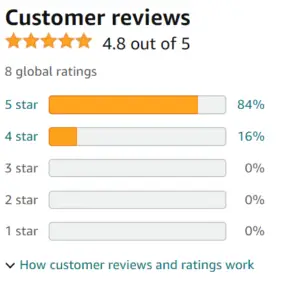I have to say, although I’ve received a number of rejections from publishers for Spirit Sight, it hasn’t been as dispiriting (see what I did, there?) as I expected it would be. One reviewer said he read it and showed it to his senior editor, but they ultimately decided it wasn’t right for them. The fact he asked for a second opinion is encouraging. He then offered some advice, which is unheard of in my limited experience. He said that few publishers would take a chance on such a long manuscript, so I should consider breaking it into two or three novels. Some of you may know me well enough to know I always look for the worst interpretations of events, but even I couldn’t help hearing “this is good enough to publish if it were shorter.”
At over 241K words, Spirit Sight is long, even for a fantasy novel. Still, it’s not unique. According to the website Reading Length, all the Game of Thrones novels by George R. R. Martin are longer. Part 1, for example, has more than 293K words. My favorite novel, The Name of the Wind by Patrick Rothfuss has over 244K words. The problem is, I’m no Martin or Rothfuss. Yet.
For such a long story, there has to be something that keeps the reader’s interest. The Name of the Wind has a compelling protagonist, interesting side characters and prose that rises to poetry at times. Game of Thrones has a host of compelling characters and intricate plots that intertwine in fascinating ways. Um. Well, I do have a compelling protagonist, two, in fact. I have a host of characters and multiple plots that intertwine in…ways. Hmmmm.
So, I tried coming up with a way to split it into two books. The problem is, you can’t simply cut a novel into parts and leave the story intact. A novel has to have the proper structure. There has to be a central conflict that is resolved by the story’s end. Genre fantasy novels typically have three acts. There is a ‘disaster’ at the end of the act one, escalating tension through act two, another disaster at the end of act two, then the central conflict resolves by the end of the act three. It’s possible to structure the novel in other ways, but it’s not possible to end the novel without resolving the novel’s central conflict. Harry Potter doesn’t resolve the conflict with Voldemort until the last book, but each book has its own conflict that is resolved by the story’s end. The sorcerer’s stone is saved, the basilisk is dispatched, the prisoner of Azkaban is revealed to be innocent. To split Spirit Sight in two, I have to come up with two coherent stories.
Still, if I could pull it off, I would have two completed manuscripts, which might be easier to sell. So, I dug into it, assuming I could find a way to make it work. After all, it’s my story. The problem is the multiple plot lines. I can get Minna’s story to work, but then Harold’s story doesn’t work. I could drop Harold, but my beta readers love Harold, as do I. No matter what I do, I would have to sacrifice much of what I love about the story. There’s a saying in writing that you must often ‘kill your darlings.” It means sometimes you must jettison something you love if it improves the story. I’m afraid that in breaking the book in two, I would have to sacrifice so much of what I love about it, it would no longer be my story. It would be a different story, and I would never know if others would love it as much as I do.
So, while some publishers are cogitating, I’m considering going the indy route and publish it myself. More on that fraught decision in another post.
Andsutra.




2 thoughts on “Killing your darlings”
Perhaps Spirit Sight is intended to be a Netflix series instead of a novel… ?
How cool would that be?!
Comments are closed.